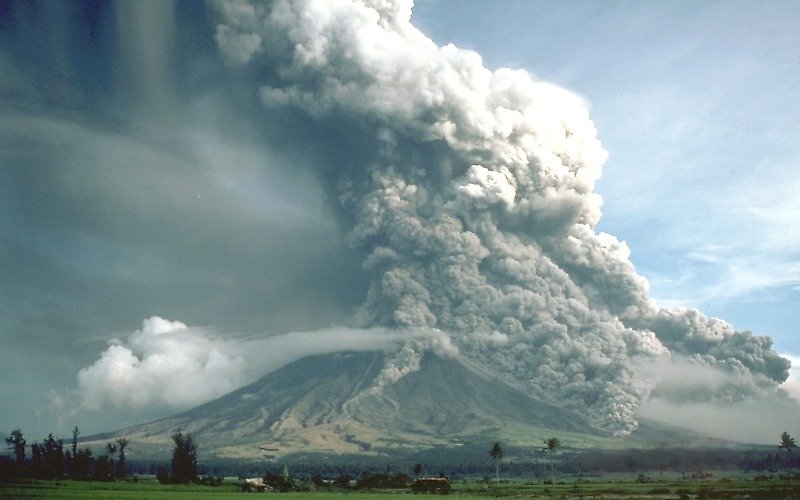C.G. Newhall, Public Domain.
The past, current, and future eruptive activity of a volcano.
A volcano can be active, dormant or extinct.
Volcanic activity has an important impact on climate. Active volcanoes that are erupting or have recently erupted often lead to a short term cooling effect. Temperatures fall after eruptions.
While powerful eruptions often only last for a few days the massive outpouring of gases and aerosols may affect the climate for many years into the future.
Water vapor is the most abundant volcanic gas. Usually more than 60 percent of the emission in a volcanic eruption is water vapor. CO2 and sulfur dioxide (SO2) are the two other important components.
When SO2 is injected into the stratosphere by an eruption it is converted into sulfuric acid (H2SO4). The sulfuric acid condenses to form sulfate aerosols. These increase the Earth's albedo sending more sunlight back into space resulting in a cooling of the Earth's troposphere.
On a very long timescale volcanoes can contribute to warming because they emit the greenhouse gas CO2 when they are active.
Volcanoes in tropical regions have bigger impact on the climate than volcanoes in temperate regions. This is because the circulation of the stratosphere favors the worldwide dispersion of tropical sulfates, but pushes sulfates from volcanoes in temperate regions back down to Earth again where they have less effect on climate.
